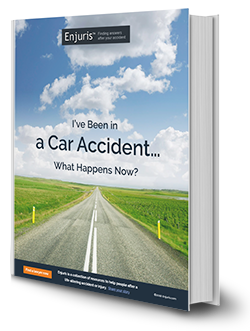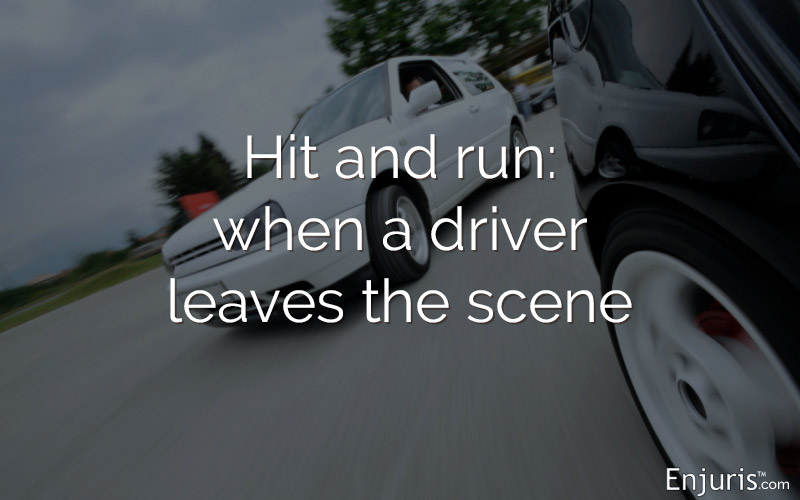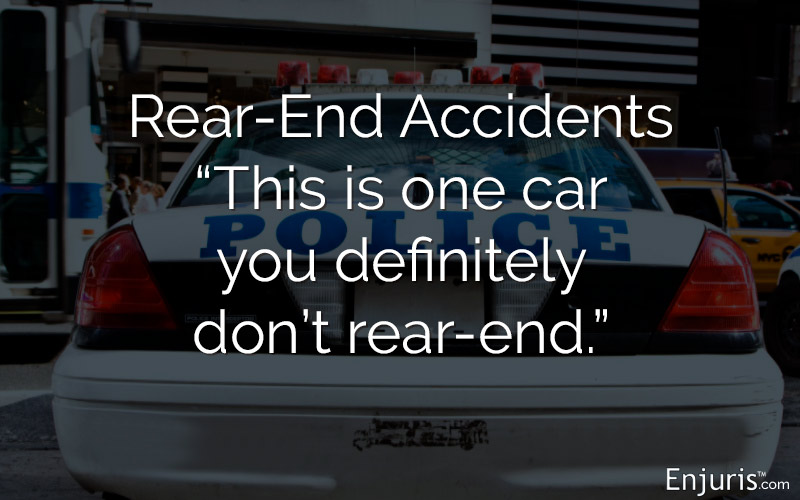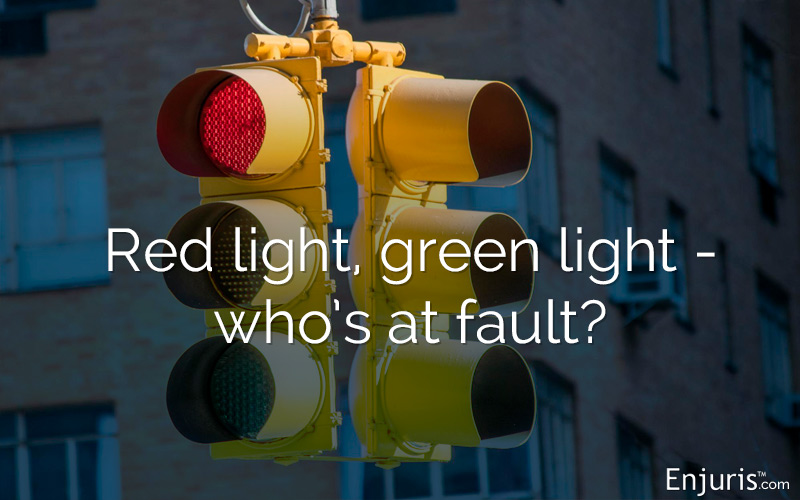The ultimate guide on everything you need to know about a car crash in the Garden State
Almost everyone is involved in at least 1 car accident in their lifetime — and for most people, many more than that. While some car crashes involve serious injury or fatality, the majority result in minor injuries or no injury at all.
For residents of New Jersey, auto accidents are a far too common occurrence.
As the chart above shows, the number of crashes from 2001 to 2018 has ebbed and flowed, but remains fairly constant at or above 250,000 crashes per year — or nearly 700 every day.
While that might seem like a staggeringly high number of car crashes, there are more than 6 million licensed drivers in New Jersey.
New Jersey no-fault car insurance
Each state is either "at fault" or "no fault" when it comes to car insurance.
In New Jersey, the damages are paid by the driver who caused the accident (or that driver's insurance policy).
Personal Injury Protection (PIP) insurance
New Jersey requires each driver to have Personal Injury Protection (PIP) insurance. This covers your medical bills after an accident regardless of who was at fault. This would apply to you or any other person covered under your insurance policy.
There are 2 kinds of PIP coverage:
- Medical treatment, which includes any costs related to doctors, hospitals, medical devices or equipment, ongoing therapies, prescription medication, etc.
- Home care, which would cover costs for someone to take care of your home or family if you're unable to do so.
Home care coverage is optional. But if paying someone to maintain your household and provide childcare would be difficult for you, it would probably be a wise purchase.
Bodily injury coverage
If you're the driver who caused the accident, your Bodily Injury Liability insurance takes effect. This would cover a claim made by an injured person who was injured or killed because of your negligence.
What if PIP or no-fault coverage isn't enough?
New Jersey allows for a lawsuit to cover expenses outside PIP/no-fault insurance for accidents that result in one of these serious injuries:
- Loss of body part
- Loss of fetus
- Death
- Permanent injury (affected body part isn't expected to recover to previous function)
- Displaced fracture
- Significant disfigurement or scarring
New Jersey negligence and liability laws
Even though New Jersey is a no-fault state, sometimes the damages resulting from a serious car accident are so severe that they exceed the amount covered by a person's insurance policy. In such cases, the crash victim or their family may need to sue the at-fault driver by filing a personal injury or wrongful death claim.
In these cases, the following elements must be proven to successfully file suit:
- Duty. An injured person (plaintiff) must show that the defendant owed them a duty. We all have a duty to someone, and that changes based on circumstances. You don't have to know someone or have a relationship to them in order to owe them a duty. Every driver has a duty not to cause harm to any other road user, whether it's other motorists, pedestrians, or bicyclists.
- Breach. The second element to a personal injury claim is proving that the defendant breached their duty. In a car accident situation, this means the driver was negligent through action or inaction. They might have been following road rules and driving cautiously, but still made an error (like misjudging speed, for example) that was negligent.
- Causation. Once the defendant has acted negligently, did that negligence cause the accident? A driver might have rolled through a stop sign, but if you failed to look before proceeding through an intersection, the question will be asked whether you or the other driver caused the accident.
- Injury. In order to have a valid claim, you must have suffered an injury. If you were in a minor accident like a slow-speed rear-ender, you might be annoyed but otherwise unharmed. You can't claim damages unless you suffered an actual injury or property loss.
- Damages. Damages are the money you can recover for your losses. If your car accident injury resulted in financial costs, you can claim those expenses as damages. Some accidents result in both economic and non-economic losses. Economic losses equal the money value of what you paid for medical treatment, lost wages or earning capacity, and other objective expenses. Non-economic losses might include pain and suffering, loss of consortium, and other types of emotional distress. These damages can be more difficult to calculate since they are subjective and based on the severity of each case.
New Jersey modified comparative fault rule
Each state follows 1 of 4 fault systems.
Often, negligence isn't attributed to just 1 party. The court might find that both drivers had some level of negligence for the accident — in other words, it's not always one-sided.
Here's an example:
Driver Daisy is driving safely and at the correct speed limit. She sees a bicyclist in her lane and swerves to avoid hitting him. In doing so, she causes a head-on collision with Motorist Michelle.
Michelle was also driving safely, and she was in the lane approaching Daisy. But at the exact moment Daisy swerved to avoid the cyclist, Michelle reached behind her to hand a snack to her child in the back seat. In doing so, she couldn't react quickly enough to avoid a collision with Daisy.
Michelle suffers a traumatic brain injury and sues Daisey for $100,000.
The court finds that Daisy was, indeed, at fault for the accident. She should've realized that she couldn't pass the bicyclist and avoid oncoming traffic at the same time. The correct thing for her to do would've been to slow down and wait behind the cyclist until Michelle passed.
However, Michelle was negligent, too. Handing something to a backseat passenger could be construed as a form of distracted driving.
In this scenario, Michelle might be found to be 20% liable for the accident, so the court would reduce her total $100,00 award by 20% — to $80,000.
But if Michelle was found to be 51% liable, she wouldn't be able recover any damages whatsoever.
Comparative negligence means that if the plaintiff had partial responsibility for the accident, their damage amount is reduced by the percentage of fault. In New Jersey, the plaintiff can't recover any damages if their percentage of fault is 51% or higher.
10 most common causes of car accidents
- Distracted driving. Distracted driving is a serious problem. As people become more and more reliant on cell phones for maps, podcasts, music, traffic reports, and other functions, there is more and more reason why they feel that they "need" to check their phone. But you should never, ever handle your phone or any electronic device while driving. Also, distraction can include eating, passenger behavior, personal grooming, or any other behavior that takes your mind, eyes or hands off driving.
- Drunk driving. You're not allowed to drive if your blood alcohol content (BAC) is 0.08% or higher. If you're under the influence of alcohol, drugs, or some medications, it can severely affect your driving and raises your risk of causing an accident.
- Aggressive driving. You've likely heard of "road rage," which is when a person becomes so angry at another drive that they might bully or even physically harm someone on purpose because they're annoyed at something about their driving. But there are other kinds of aggressive driving that don't necessarily involve anger at a specific individual. Some drivers might be impatient and speed or swerve around cars they think are driving too slowly, make unsafe lane changes, or behave recklessly in some other way that could result in an accident.
- Speeding. Some speeding is aggressive, and some is just carelessness. You might speed because you're in a hurry or running late, but you shouldn't. Speeding doesn't get you to your destination any faster if you crash. And when you speed, you have less time to react to a traffic situation in front of you and less time to stop if necessary.
- Reckless driving. Similar to aggressive driving, reckless driving is any kind of action behind the wheel that's unsafe. It might be speeding, weaving, dodging other cars, failure to stop at lights or stop signs, or any other number of aggressive driving practices that break road rules or are unsafe.
- Inexperienced drivers. Your teenager might be the most responsible kid around, and they might care a lot about following road rules, driving at the correct speed, heeding stop lights and signs, and doing everything "right." But younger drivers are inexperienced. That lack of experience could cause even the most careful driver to misjudge the speed of an oncoming car, poorly execute a turn, or make other mistakes that result in an accident. And, some teenagers are more likely to take risks than an older driver would. Statistically, younger male drivers are most likely to make risky driving decisions.
- Tailgating. Tailgating is when a driver follows too closely behind the driver in front of them. Some tailating is aggressive, but sometimes it happens because someone isn't paying attention or simply doesn't see the practice as dangerous. When traveling 55 mph, you should leave 16 car lengths (which is about 243 feet) between your vehicle and the car in front of you. Tailgating is dangerous because when you're too close to another vehicle, you don't have enough time to stop if you need to do so quickly.
- Weather conditions. New Jersey is no stranger to severe weather — ice, snow, wind, and other conditions are a regular part of our life. When the weather is extreme, it's best to stay off the roads when you can. But when that's not practical or realistic, exercise caution and drive slowly.
- Failure to obey traffic laws. Traffic laws are more than just stopping at red lights. Following the speed limit, staying in your lane, passing bicyclists safely, and yielding to pedestrians are just some necessary aspects to driving responsibly. Be familiar with the traffic laws in your local area and state, and obey them to reduce your risk of a collision.
- Failure to stop at a red light or stop sign. Although stopping for stop signs and traffic lights are part of following traffic rules, they're also among the ones drivers break most often. Even if you think you're driving through a "quiet" intersection, you must stop completely at stop signs and lights.
8 steps to take after a car accident in New Jersey
- Stop, then move your car. If you've been in an accident, New Jersey law requires that you stop your car and move it out of the flow of traffic, but still keep the vehicle as close to the crash site as possible.
- Check your condition and others'. It goes without saying that it's important to check on your physical condition after an accident. If you're injured and can't move or leave your vehicle safely or without further injuring yourself, then don't. Wait for assistance to arrive. But if you can move around, check on your passengers and then anyone in other cars.
- Call for help. Even if the accident is minor, you should call the police. New Jersey law requires that any accident involving death, injury, or property damage of more than $500 must be reported immediately. An accident report can help your legal claim because it will record the facts and conditions surrounding the scene. The police will also be able to collect evidence like tire tracks, damage to the vehicles or other property, weather conditions, and other factors that might have contributed to the accident.
- Gather witness information. Witnesses are important. The police report should include some witness contact information, but it might not get everyone. Often, the police are most concerned with securing the scene, taking care of medical needs, and minimizing traffic disruption. But most well-meaning witnesses and good samaritans who might stop to help at an accident will leave once they see that first responders have things under control. That's why, if you're able to catch the witnesses before they leave the scene, try to get their contact information yourself.
Enjuris tip: The second aspect to gathering witnesses' contact information is finding the "unseen" witnesses. If the accident happened near a home, business, in a parking lot, or at an intersection, there's a possibility that it might've been caught on surveillance video. But be aware that many surveillance videos are only saved for a short time unless there's a reason to keep it longer. So, it could be very important to check with anyone nearby who might have a recording of what happened.
- Take accident scene photos. Accident scene photos can be among your best pieces of evidence. They can show exactly how much damage occured, what the weather was like, the position of street signs and signals, and other factors that might be essential to proving your case.
Enjuris tip: Get tips for how to take effective accident scene photos.
- Get a medical examination. You might think you weren't injured or that your injuries are so minor that they don't require treatment. And maybe that's true, but you want to be checked by a medical professional, regardless. After any accident, there's the possibility that you have injuries that you don't notice right away. Symptoms might appear days or even weeks later. If you wait to visit a doctor until symptoms appear, it will be difficult to prove that they're related to the accident. It's crucial that you visit a medical provider such as your own physician, an urgent care facility, or a hospital immediately following an accident.
- Call your insurance company. Even if you don't want to make a claim against your insurance policy, you still should report the collision. There are risks and benefits to paying out of pocket for a car accident and avoiding the insurance company. Sometimes you learn that the damage to your car is more than expected, or medical problems could pop up a few days after the collision — and you'll want to use your insurance coverage. But some insurance companies won't cover an accident if it's not reported within a certain amount of time. Remember, a report isn't the same as a claim. Even if you're not planning to make a claim, you can still file a report.
- Call a personal injury lawyer. If your accident results in minor losses, you might be able to reach a satisfactory settlement from your insurance company without too much trouble. But if your accident results in injuries that require ongoing or future medical treatment or continued lost wages, or if the settlement offered by your insurance company isn't enough to cover your immediate costs, you need to seek the advice of a personal injury lawyer.
A personal injury lawyer is the best person to provide advice and guidance after a car accident. When you consult with a lawyer, they will gather additional evidence and use the expert advice of actuaries, accountants, physicians, and other professionals who can provide accurate guidance for how much your settlement should be worth.
If you're looking for a New Jersey car accident attorney, the Enjuris lawyer directory is a great way to find help. Using this free resource, you can find a lawyer near you who will help you to recover the compensation you need after a car accident.
- What To Do After a New Jersey Car Accident
- Filing an Injury Claim for a New Jersey Pedestrian Accident
- Finding Recovery After a New Jersey Bus Accident
- Guide to Legal Recovery After a New Jersey Motorcycle Accident
- Legal Rights and Responsibilities for New Jersey Boaters
- New Jersey Bicycle Accident Guide
- New Jersey Car Insurance Laws, Requirements and Rules
- What To Do After a New Jersey Drunk Driving Accident
- What to Do After a New Jersey Hit-and-Run Car Accident
- When a Distracted Driver Causes a Car Accident in New Jersey
- Who’s Legally Responsible for a New Jersey Train Accident?
Did you know that car accident law varies by state?
Hurt in a car crash? You may find these resources helpful

What to do if you cause a car accident A few simple steps can reduce your penalties

Concussions and auto accidents Steps to take to keep your head safe

Life after your accident What has life been like for you since your accident?
Need a lawyer?
Documenting facts after
your car accident
Always be prepared. Print out a post-accident report and keep it in your glove compartment. Read more
Common car accidents




















